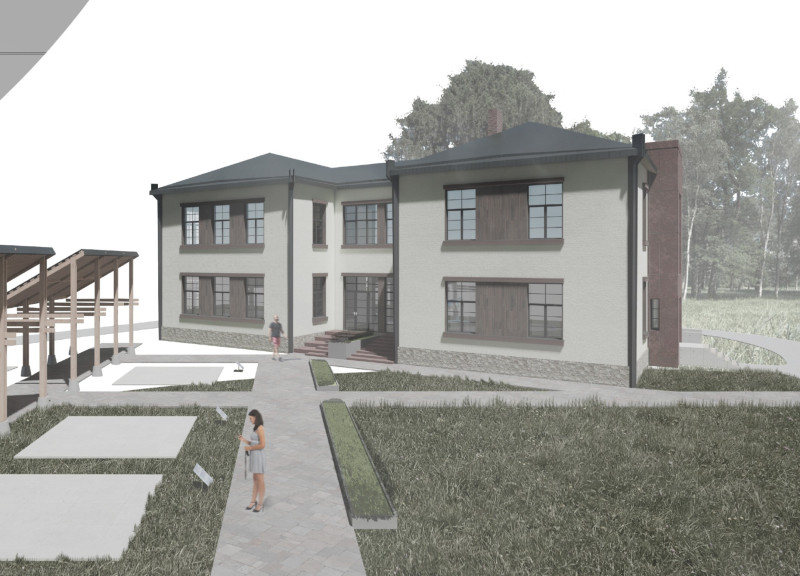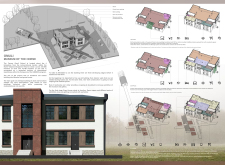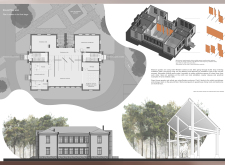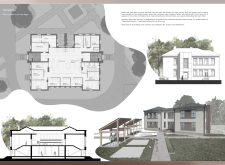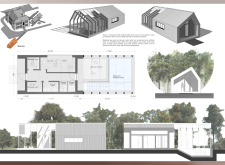5 key facts about this project
Space Analysis and Functionality
The architectural design strategically reconfigures the existing structure to create a cohesive yet flexible environment for exhibitions and community use. The layout prioritizes open circulation paths, connecting distinct exhibition areas while allowing for easy visitor movement. Key functional components include spacious exhibition halls, guest amenities for staff and visitors, and outdoor areas that facilitate interaction with the surrounding natural landscape. The integration of open-air pavilions enhances the museum’s capacity for hosting events and installations, directly engaging with the community and the landscape.
Sustainable Design Approaches
What distinguishes this project is its commitment to sustainability through adaptive reuse. Instead of constructing a new building, the project revitalizes an existing structure, conserving materials and minimizing environmental impact. The architectural plans include the use of local brick, timber, and glass, reinforcing the connection to the region's heritage. Distinctive design features, such as movable walls and flexible exhibition spaces, allow adaptability for future programming. This approach not only respects the past but also facilitates ongoing engagement with the local community by offering spaces that can evolve over time.
Integration with Nature
The Omuli Museum of the Horse further stands out for its thoughtful integration with the natural environment. The design incorporates landscaped areas and outdoor exhibition spaces, fostering a relationship between the museum and its surroundings. Features such as a sauna and an artificial lake are strategically positioned to enhance visitor experience while providing recreational opportunities. This blend of architecture and landscape design enhances the museum's functionality and serves to attract visitors seeking both cultural enrichment and relaxation.
For those interested in exploring the architectural details of this project, including the architectural plans, sections, and innovative design concepts, a deeper examination of the presentation is recommended. The insights from such resources will provide a comprehensive understanding of how the Omuli Museum of the Horse approaches architecture in reinterpreting historical spaces for modern use.


